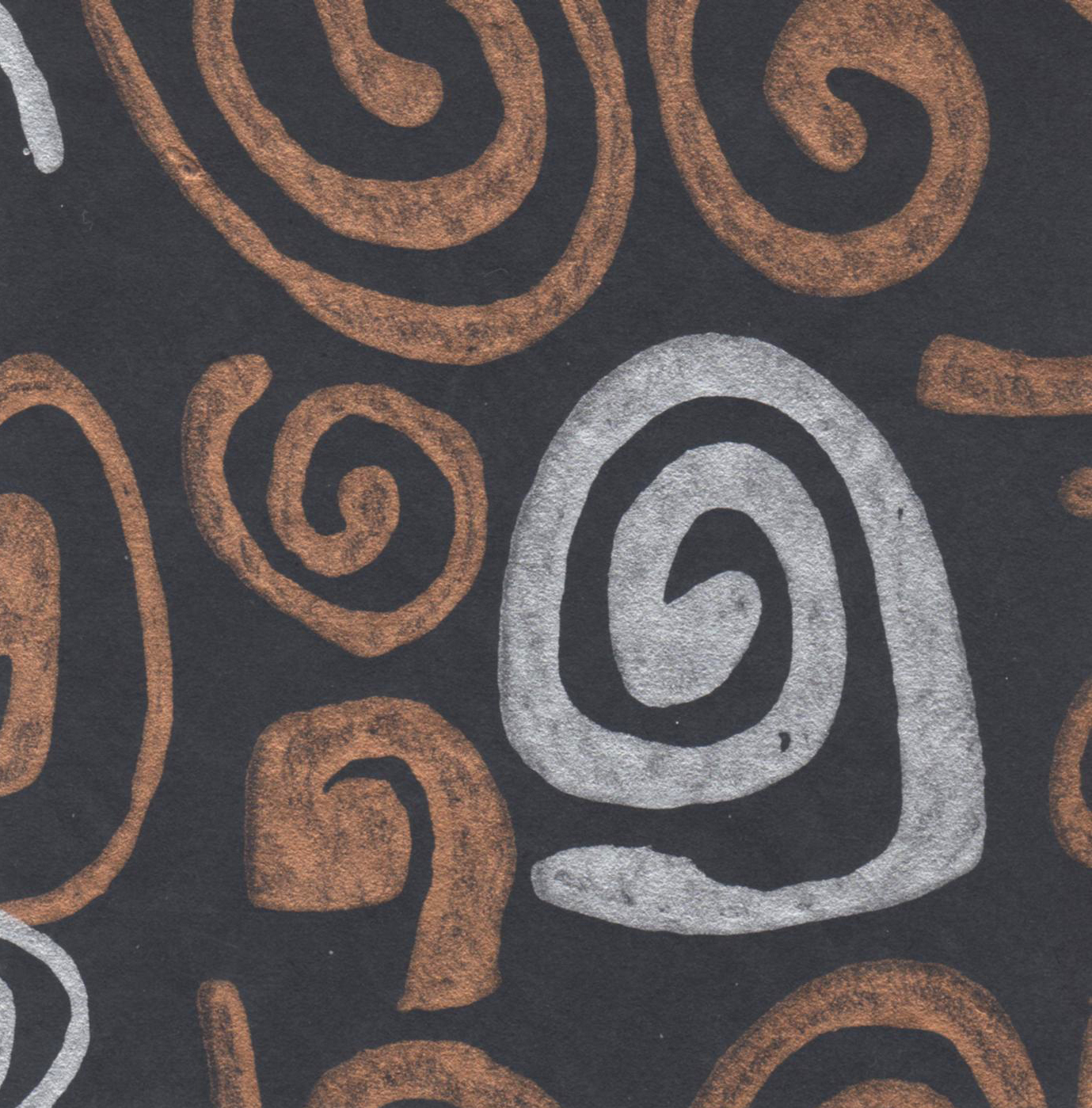Michael Robinson
Kaunsi Kanada

Cover art if handsilkscreened paper from India
available on myriad additional platforms
Kaunsi Kanada was premiered on Discreet Music for KPFA FM Berkeley
and on Transfigured Night for WKCR FM at Columbia University in 2000.
1. Kaunsi Kanada (2000) 57.15
meruvina: ud, rainstick, tabla, dholak, dhol, udu, tanpura
Composed, Programmed, Mixed, Designed and Produced by Michael Robinson
Recorded and Mastered by Catharine Wood at Planetwood Studios
Last summer, I acquired a tape of Shivkumar Sharma and Zakir Hussain performing Kaunsi Kanada live in Pune, India. During the opening alap, Sharma and the tanpura are enveloped by a sound which I initially could not place. It was a friend who pointed out that the unusual sound was the chirping of crickets! The liner notes to the tape apologize for unavoidable "noise" on the recording, but I have grown to love this music from nature that actually enhances the performance. I listened to this recording many times during my summer hikes, but it was not until I attended a house concert by the sitarist, Reena Shrivastava, and her brother, the sarodist, Rajeeb Chakraborty, along with Shubhen Chatterjee on tabla, that I was finally moved to create my own interpretation. These gifted artists presented Kaunsi Kanada with an unforgettable tenderness. Kaunsi Kanada is a midnight raga which adds rishaba and panchama to the swaras of Malkauns. There are various opinions on the movement of the raga's swaras, and I have followed my own instincts for presenting the rasa of this exceptionally beautiful raga. For myself, the essence of Kaunsi Kanada is a deep and mystical love, along with wonderment for the mystery of the deep night. In characteristic style, I have used the ud timbre in my own way, including taking it beyond its normal pitch range. My aesthetic involves utilizing the possible expressive and technical capabilities of the digital instruments of our time to illuminate my sensations of the moment. My composing is done seated on the floor at a low table with pencil and paper. I prefer pencil to pen, even though I never go back and change a single note. Pencil allows me to erase a mistroke. The overall sound of my music comes after working with computer-performed sound modules for sixteen years, and it is just as difficult - some believe more difficult - to make music with this medium as it is with traditional acoustical instruments. I only mention this because once in a while I hear a common misconception that digital instruments involve only pressing a few buttons! A poetic utterance by Ralph Waldo Emerson which I carried around in my wallet for years, comes to mind: Jor - momentum - begins at 15:00, and the timbre of the ud is slightly intensified, along with a haunting and subdued rhythmic ostinato in the background. At 22.29, jhala - fly like a bird, swim like a fish - begins with a great increase in the rhythmic ostinato, and a more vigorous ud. This leads to the dramatic opening of the madhya gat - medium fast composition - at 30.01, where a large family of tabla, dholak, dhol and udu bols are introduced. The lilas - labyrinthine arabesques - of rag and tal swirl around the midnight landscape with considerable intensity, and one is astonished at the sudden commencement of the drut gat - fast composition - at 39.04, where the tempo increases, and the ud becomes even more insistent, riding the rapids of criss-crossing currents. When the ati drut gat - very fast composition - is introduced at 48.04, it seems as if all control has been lost, with an even more penetrating ud timbre, and a waterfall of struck skin sounds. This final section may be experienced as a musical manifestation of the Tantric piercing of the chakras, the awakening of the kundalini - serpent power - which is the energy source of all spiritual conquests. Kaunsi Kanada ends with the same two repetitions of the mysterious tanpura - representing the universe before it was formed - music which was heard at the beginning. It is a great pleasure for me to finally dedicate a recording to Ustad Zakir Hussain, one of the true musical giants of our time. No one has inspired my percussion writing more than Hussain, and his November 1999 performances in Los Angeles with L. Shankar and Vikku Vinayakram were still resonating in my memory while writing Kaunsi Kanada. I have experienced some of this myself including being given disinformation because I am not Indian and use an original approach to the raga form, not to mention unconventional instruments. However, with all the recordings available one may still "sit secretly outside the window" and learn that way if necessary! To those who have been generous enough to pass on their musical knowledge directly, I am greatly thankful.
© 2000 Michael Robinson All rights reserved
|